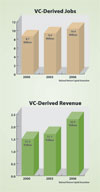February 1, 2009 (Vol. 29, No. 3)
Such Funding in the Past Has Had a Profound Impact on Job Creation and the Economy
Congress and the executive branch are working feverishly to resolve the biggest financial crisis since the stock market crash of 1929 and the Great Depression. Unfortunately, as Treasury Secretary Henry Paulson commented in the November 17, 2008, edition of The New York Times, “There is no playbook for responding to turmoil we have never faced.”
Enormous effort is being devoted to devising game plans for buttressing financial institutions, protecting home mortgagors, salvaging the auto industry, grappling with unemployment, and responding to whatever emerges as the next big issue. Probably over a trillion dollars will be spent in solving or trying to solve this crisis, although a good portion of these funds may be repaid to the government upon the return to normal times.
I would propose another approach—utilizing government funds, which might stimulate the economy, create jobs, tackle major technological issues such as fostering the development of alternative sources of energy, and provide the government with a decent return on investment. Perhaps the government should consider partnering with other investors in providing the funds needed by venture capital (VC) firms.
According to the National Science Board, in its report entitled “Science and Engineering Indicators 2008”, before the recent financial meltdown around $50 billion per year of private capital was invested in emerging U.S. companies—approximately half of these funds came from VC firms and the remaining half from angel investors. Clearly, the present environment is not encouraging for the placement of such investment capital.
Historical results reported by the National Venture Capital Association for the 20-year period ending December 31, 2007, show an annualized return of 16.7% to investors in some 1,860 U.S. venture capital and private equity partnerships. If the U.S. government had made annual investments of $10 billion in VC firms throughout the U.S. during that 20-year period, the $200 billion total investment would have yielded a total return of almost $1.5 trillion.
The impact of venture capital on job creation and the economy is also compelling. According to the International Trade Administration of the Department of Commerce, from 1970 to 2000, U.S. VC firms invested over $270 billion in more than 16,000 companies. In 2000, the surviving VC-backed companies employed 7.6 million people, representing 5.9% of all U.S. jobs, and generated sales of $1.3 trillion, accounting for 13.1% of the U.S. GDP.
It is abundantly clear that over the past 30 years VC has played a pivotal role in enabling the commercial development of innovative technologies. VC-funded advances in information technology and biotechnology have transformed our way of life. Increases in VC funding will spur the development and commercialization of alternative sources of energy. VC-funded companies will also develop and commercialize technologies that will address other important societal concerns, such as the need to reduce the costs of healthcare delivery and the need to improve teaching and learning effectiveness.
In the midst of this crisis, the federal government has a unique opportunity to play a novel role in both stimulating the economy and solving huge societal problems, while paving the way for an unprecedented return on investment. The key to implementation is to establish an apolitical mechanism, perhaps overseen by a panel of independent business people, by which government funds, perhaps amounting to $10 to 25 billion annually, could be transferred directly to VC firms throughout the nation.
The panel would be responsible for vetting VC firms and investing government monies in the funds of the approved VC firms. All investment decisions regarding which companies the VC firms should fund would be left exclusively to the general partners in the venture capital firms. The government would simply be a limited partner along with the other limited partners in these firms.
In essence, this proposal turns government aid into an investment vehicle, governed by the rules of a free market economy. Money flows from government to VC firms to deserving companies (as determined by the VC firms), which develop and commercialize technologies to meet the needs of the marketplace. Needless to say, as historical data show, most such companies will not be winners, but enough will, thereby accomplishing societal objectives while providing the government with more than an adequate return to offset losses of those companies not among the winners.

The payoff from venture capital investments in the U.S. is enormous, according to the National Venture Capital Association.
J. Leslie Glick, Ph.D. ([email protected]), is an independent corporate management advisor. Phone: (813) 818-9252.



